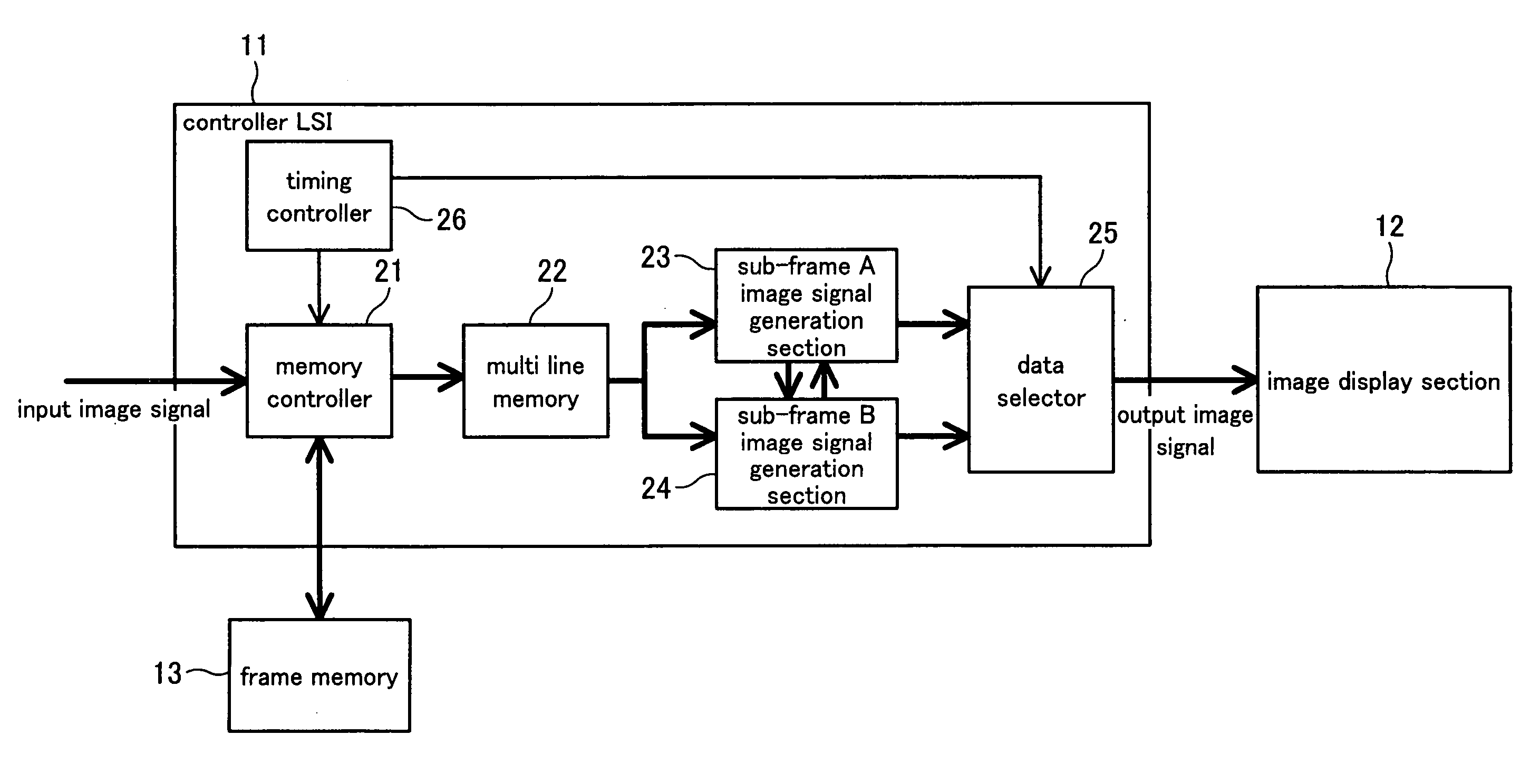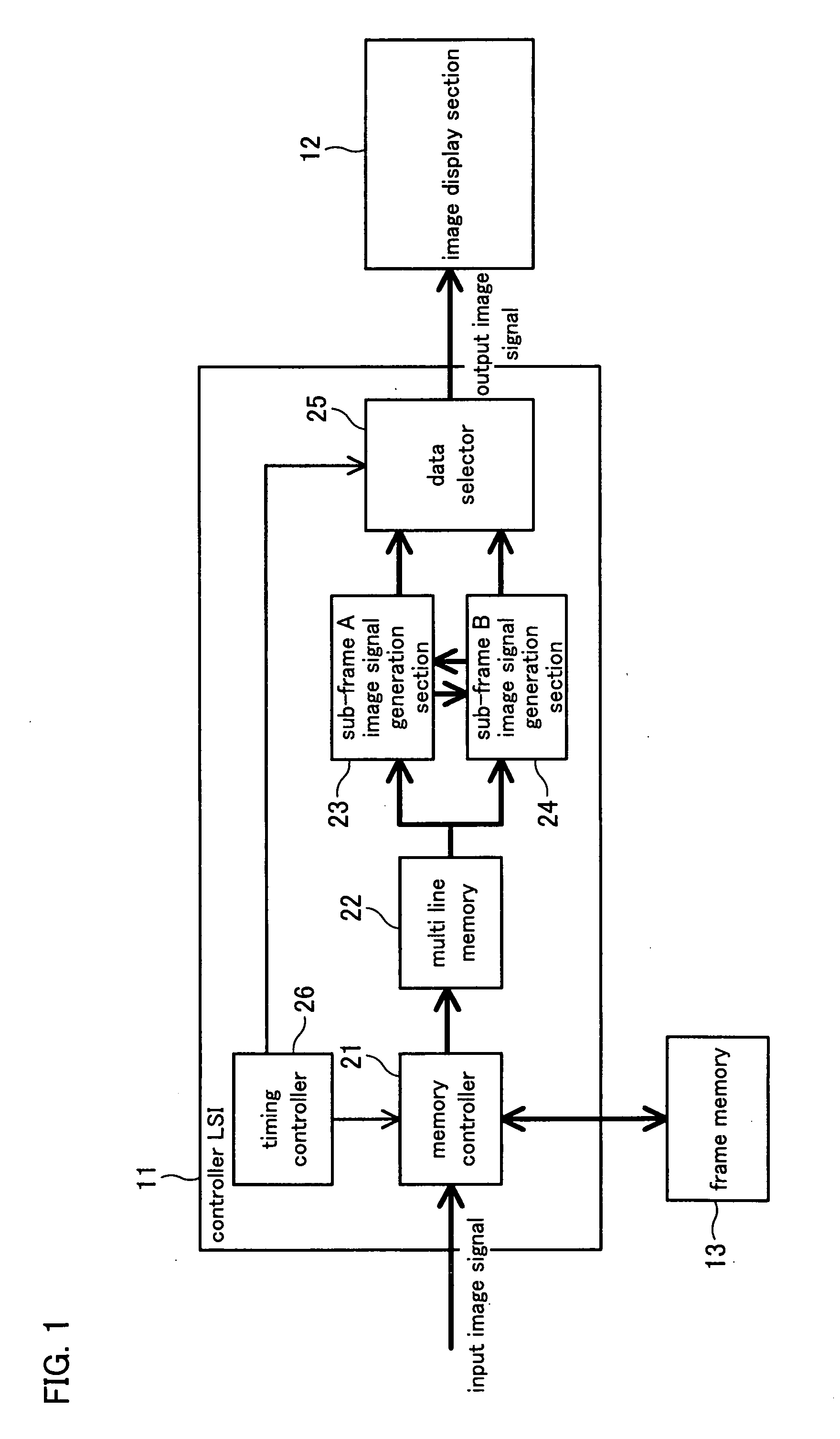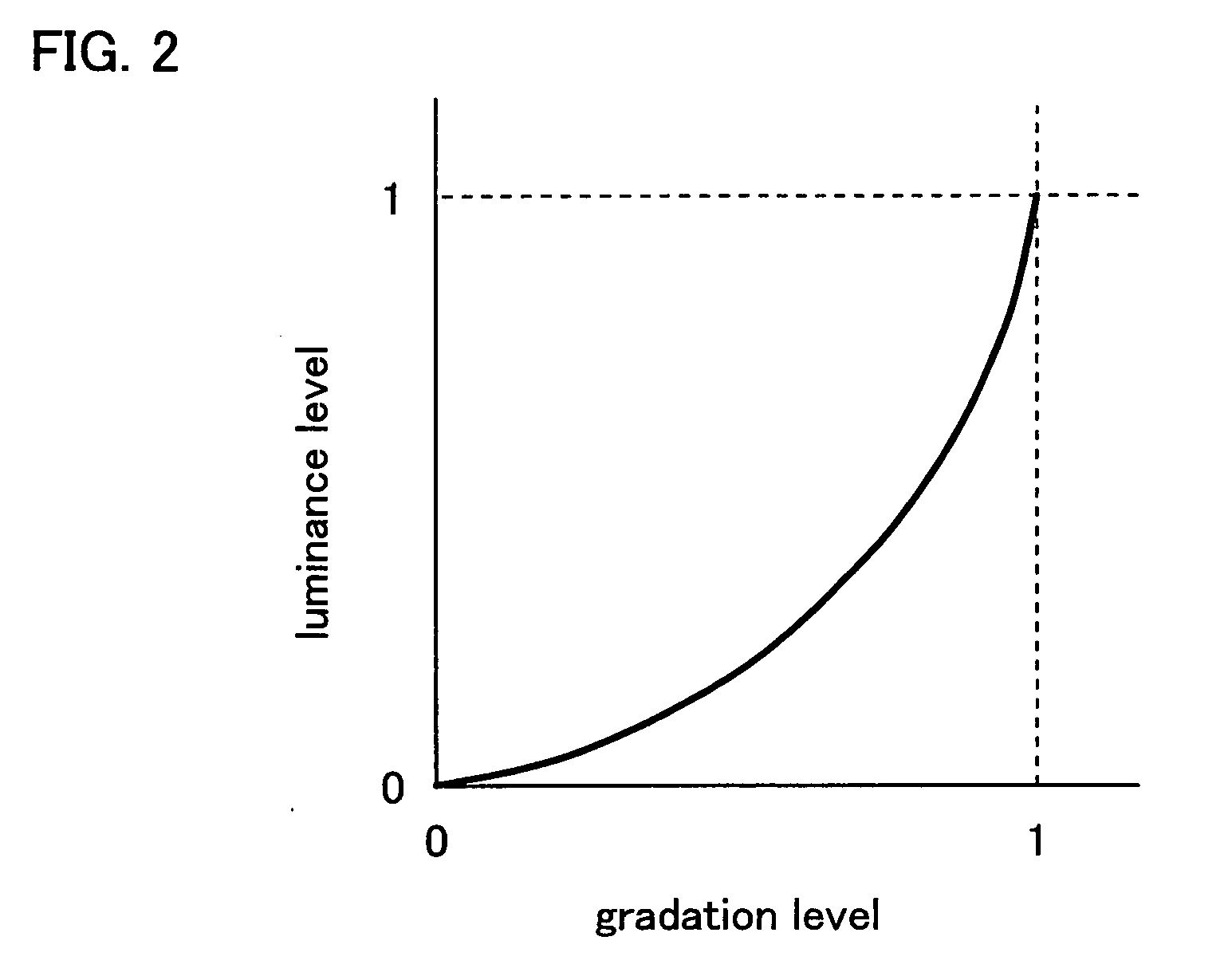Image displaying method and image displaying apparatus
- Summary
- Abstract
- Description
- Claims
- Application Information
AI Technical Summary
Benefits of technology
Problems solved by technology
Method used
Image
Examples
first embodiment
[0121]FIG. 1 shows a structure of an image displaying apparatus according to the present embodiment. In this image displaying apparatus, a controller LSI 11 (display control section) is connected to an image display section 12, such as a liquid crystal panel, and a frame memory 13. The controller LSI 11 includes a timing controller 26, a memory controller 21, a multi line memory 22, a sub-frame A image signal generation section 23, a sub-frame B image signal generation section 24, and a data selector 25.
[0122]The timing controller 26 generates timings of a sub-frame A period and a sub-frame B period which are two divisional periods of a 60 Hz input frame period, so as to control the memory controller 21 and the data selector 25.
[0123]The memory controller 21 first (1) writes a 60 Hz input image signal into the frame memory 13, and then (2) transmits an image signal of 1 frame having been written into a frame memory 13 to the multi line memory 22 at a frame period of 120 Hz. That is,...
second embodiment
[0189]In the present embodiment, the determining method of the sub-frame A and B is the same as that of First Embodiment, but the 1 frame period is divided into 3 sub-frames. The first and the final sub-frames are determined as the sub-frame A, and the middle sub-frames are determined as the sub-frame B. The period length of the sub-frame B is twice a single period of the sub-frame A. The figures to be referred are the same as those in First Embodiment. The difference from First Embodiment is the following block function.
[0190]The timing controller 26 divides a 60 Hz input frame period into 3 parts, generates timings of two sub-frame A periods and a single sub-frame B period, and controls a memory controller and a data selector.
[0191]The memory controller 21 (1) writes a 60 Hz input image signal into a frame memory,
(2) transmits the image signals of 1 frame written into the frame memory to a multi-line memory at a speed according to the sub-frame period. That is, three rounds of the...
third embodiment
[0194]In the present embodiment, in displaying the Nth frame, a virtual sub-frame M is generated as an estimated value based on the image signal of the input (N−1)th frame and the input Nth frame. The virtual sub-frame M resides in the middle time point between the input (N−1)th frame and the input Nth frame. The display 1 frame period is divided into the two sub-frames identical in period length, one of which is a sub-frame A period in which a mean image signal of pixels in a certain range in the vicinity of the target pixel of the virtual sub-frames M is outputted, and the other is a sub-frame B period in which an image signal for emphasizing the difference between the input image signal of the target pixel and the mean input image signal of the Nth frame input image signals to the pixels within the reference range in the vicinity of the target pixel is outputted.
[0195]FIG. 19 shows a structure of the image displaying apparatus. In this image displaying apparatus, a controller LSI...
PUM
 Login to View More
Login to View More Abstract
Description
Claims
Application Information
 Login to View More
Login to View More - R&D
- Intellectual Property
- Life Sciences
- Materials
- Tech Scout
- Unparalleled Data Quality
- Higher Quality Content
- 60% Fewer Hallucinations
Browse by: Latest US Patents, China's latest patents, Technical Efficacy Thesaurus, Application Domain, Technology Topic, Popular Technical Reports.
© 2025 PatSnap. All rights reserved.Legal|Privacy policy|Modern Slavery Act Transparency Statement|Sitemap|About US| Contact US: help@patsnap.com



